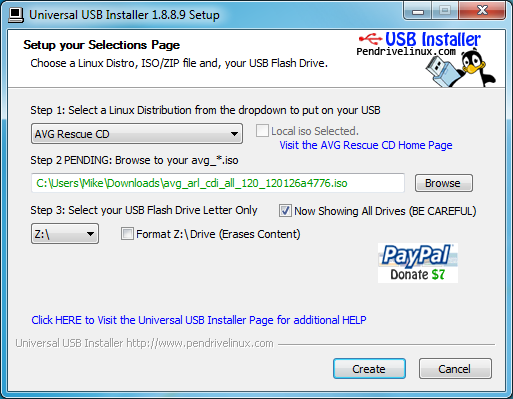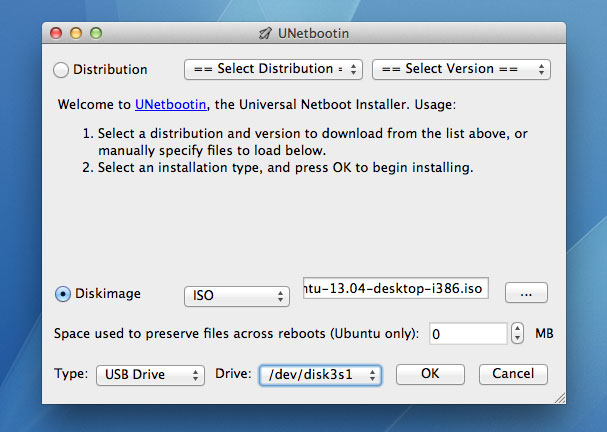
- #Mac os install linux on usb how to
- #Mac os install linux on usb 32 bit
- #Mac os install linux on usb software
- #Mac os install linux on usb password
You have to make two partitions on your Main USB drive using Gparted or Gnome Disk Utility, etc. Step 2: Create Partitions On Main USB Drive to create bootable USB with the help of ISO image file.Īlternatively, you can use DVD disk by writing that ISO image to it (but that is the old school method).
#Mac os install linux on usb software
You can use any software like Unetbootin, Gnome Disk Utility, Yumi Multi Boot, xboot, Live USB Creator, etc. Use your Linux ISO image file to create a bootable USB installation media. Step 1: Create Bootable Linux Installation Media

#Mac os install linux on usb 32 bit
TIP: Use 32 bit Linux OS to make it compatible with any available PC. To prevent any possibility of this occurrence, you may wish to disconnect your hard drive before continuing with the USB install portion of the tutorial.” Important: While this procedure will not cause loss of data, some users have experienced changes to their internal drive’s bootup behavior depending on Linux distributions selected. One PC ( Warning: Disconnect internal hard drives to prevent boot record alteration).Linux OS ISO file, for example Lubuntu 18.04.One more Pen drive or DVD disk to use as bootable Linux installation media.One Pendrive 4GB or More (Let’s call it as Main USB drive/Pendrive).Here I am using Lubuntu 18.04 Bionic beaver for this tutorial (but, you can use any Linux distribution). This tutorial is all about installing Latest Linux OS on your pen-drive ( fully reconfigurable personalized OS, NOT just a Live USB ), customize it, and use it on any PC you have access to.
#Mac os install linux on usb how to
Read Also: How to Install CentOS 7 in a USB Drive Yes! You can use your own, customized Linux OS on any machine with just a USB drive. You can now quit Terminal and eject the volume.Ever thought of using any computer which is not yours, with all your personal stuff and configuration? It is possible with any Linux distribution.
#Mac os install linux on usb password

Sudo /Applications/Install\ macOS\ Mojave.app/Contents/Resources/createinstallmedia -volume /Volumes/ MyVolume Sudo /Applications/Install\ macOS\ Catalina.app/Contents/Resources/createinstallmedia -volume /Volumes/ MyVolume Sudo /Applications/Install\ macOS\ Big\ Sur.app/Contents/Resources/createinstallmedia -volume /Volumes/ MyVolume Sudo /Applications/Install\ macOS\ Monterey.app/Contents/Resources/createinstallmedia -volume /Volumes/ MyVolume

If it has a different name, replace MyVolume in these commands with the name of your volume. These assume that the installer is in your Applications folder, and MyVolume is the name of the USB flash drive or other volume you're using. Type or paste one of the following commands in Terminal.Open Terminal, which is in the Utilities folder of your Applications folder.Connect the USB flash drive or other volume that you're using for the bootable installer.


 0 kommentar(er)
0 kommentar(er)
